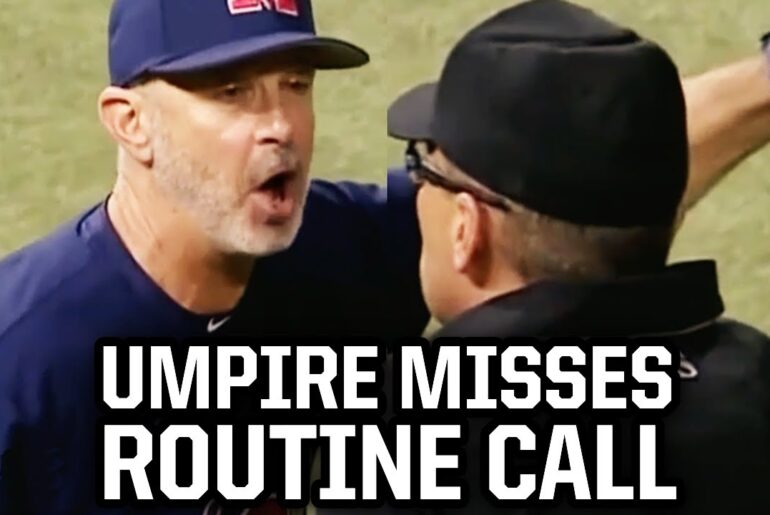The scorching heat of St. Louis is not the only thing causing frustration in the baseball game. In this fiery encounter, umpire Ed Hickox finds himself at the center of controversy, calling every outside breaking ball a strike. Both teams, the players, and the fans are getting annoyed as the game’s outcome hinges on these crucial calls. In this article, we delve into the heated moments and discuss the challenges faced by umpires in making accurate strike calls in baseball.
The Outside Breaking Ball Drama
As the game progresses, it becomes evident that Ed Hickox’s strike zone is leaning heavily towards the outside breaking ball. Pitchers exploit this by repeatedly throwing these pitches, knowing they will likely be called strikes. This strategy frustrates the batters and adds tension to an already intense match.
Controversial Calls Impact the Game
The tension reaches its peak when the bases are loaded, and the Yankees are trailing by two runs in the fifth inning with no outs. Marwan Gonzales steps up to bat, and the umpire’s outside strike calls come under scrutiny. The batter walks, but instead of bases loaded and a potential run, he strikes out, leading to a heated exchange between the players, coaches, and the umpire.
The Turning Point
The frustration continues as the outside strike calls persist, leading to an animated discussion between Yankees’ manager and umpire. Nevertheless, the game takes a turn when Aaron Judge ties the score with an exceptional hit. The fans are relieved, and the umpire’s earlier controversial calls seem momentarily forgotten.
The Umpire’s Dilemma
Throughout the game, umpire Ed Hickox faces criticism for his strike calls, but it is essential to recognize the challenges umpires face in their role:
– The game moves at a lightning-fast pace, leaving little time for deliberation on every call.
– The extreme heat and physical demands of the job make it challenging to maintain consistent accuracy over long periods.
– Umpires are human and susceptible to errors, especially when dealing with pitches traveling at high speeds.
A Case for Change
While the frustration is understandable, it is vital to remember that umpires, especially at the professional level, are highly experienced and well-trained individuals. However, considering the physically demanding nature of the job and the fast-paced game, some argue that certain changes should be considered:
– Implementation of technology, such as automated strike zones, could reduce human errors and improve accuracy in making calls.
– Considering the physical toll of the job, exploring ways to support umpires during games, like implementing more breaks or providing better protective gear, could be beneficial.
Conclusion
The scorching heat of St. Louis set the stage for an intense baseball game with controversial strike calls. As tempers flared and emotions ran high, it is crucial to remember the challenges faced by umpires in making precise decisions on every pitch. While criticism is inevitable, finding a balance between human judgment and technological advancements could be the key to resolving the ongoing debate over strike calls in baseball. Regardless of the outcome, one thing is clear – the passion for the game continues to drive discussions and seek improvements for everyone involved.



